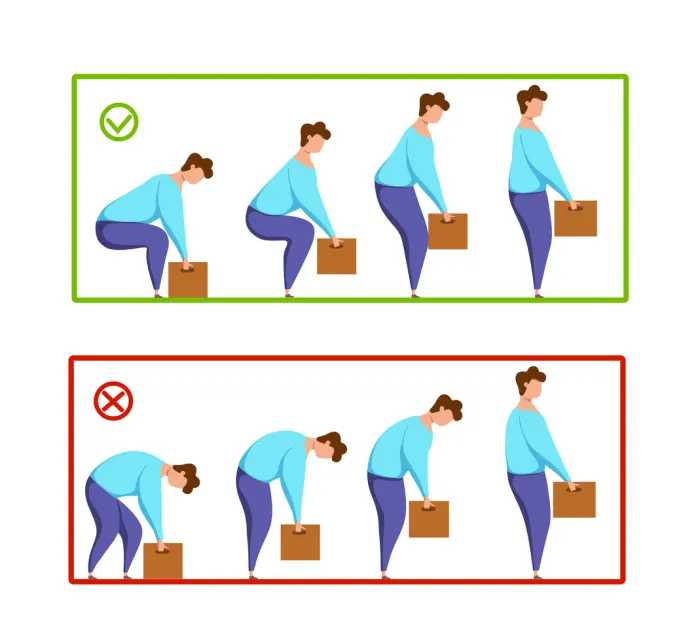Sometimes it’s just as important to know what NOT to do as it is to know what to do when you have sciatica. Avoiding these will cut your risk of sciatica symptoms.
Sciatica pain often comes on when a bone spur or herniated disc compresses a spinal nerve root in your lower back, causing excruciating discomfort in your back, leg, and butt. If you are living with sciatica, you may be trying everything to stop your pain: physical therapy, epidural injections, and various medications. But did you know there are some common, everyday things that can really aggravate your condition?
Here is what you shouldn’t you be doing if you are experiencing the pain that sciatica causes.
1. Avoid Exercises That Stretch Your Hamstrings
Stretching your hamstrings can worsen sciatica, says Ronald Tolchin, D.O., director of spine care at Baptist Health Miami Neuroscience Institute. Some exercises to skip? Straight-leg sit-ups, bending forward and touching your toes, squats with weights, and the yoga pose known as downward dog, he says. And, he adds, avoid doing leg circles where you lie on your back and make circles with your legs while one leg is down and the other one is raised.
What to do instead: When you are having pain, try walking, which warms up all your muscles, or swimming, which uses the buoyancy of the water to keep weight off your back, Dr. Tolchin says.
2. Avoid Lifting Heavy Weights Before Warming Up
Certain exercises with heavy resistance can aggravate your sciatica unless you have sufficiently warmed up your muscles first, says Adeepa Singh, M.D., a a pain management specialist and physiatrist with Brain and Spine Surgeons of New York.
“Weighted deadlifts, weighted squats, and Olympic lifts can increase loading and strain on your lumbar spine,” she explains. “If you do train with weights, be sure to stretch beforehand to warm up your muscles.”
What to do instead: Stretching and strengthening that start with gentle range of motion exercises, says Dr. Singh. “These alleviate inflammation of your back muscles and help improve your mobility to prevent further injury,” she says.


Use caution and warm up extensively before heavy deadlifts or other exercises that work the posterior chain.
3. Avoid Certain Exercise Machines
For instance, rowing machines increase the strain on your lower back, especially if your core muscles are weak or not adequately warmed up, says Dr. Singh. Also don’t go on the elliptical trainer at high resistance or high incline, avoid higher impact running on the treadmill (sprinting or using a high incline), and bikes such as the Peloton (in certain situations), says Ai Mukai, M.D., a board-certified physical medicine and rehabilitation physician at Texas Orthopedics in Austin, TX.
“The Peloton bike can be OK for some people, but the flexion forward and possible twisting while on it can aggravate sciatica,” Dr. Mukai says.
What to do instead: Lower-impact aerobic machines and activities are fine and can even help sciatica, says Dr. Mukai. A recumbent bike is OK, too.
“But for a recumbent bike, I usually recommend a towel roll to support the lumbar curve,” she adds.
It’s fine to walk, not run, on your treadmill. But don’t power through if you are in pain.
“I would say sciatica pain or nerve pain is not a ‘good pain’ like sore muscles that people should power through,” Dr. Mukai says. “When a nerve is getting irritated by an activity and you are getting increased nerve pain and/or numbness or weakness, you should stop that activity.”
4. Avoid Sitting For Longer Than 20 Minutes
After 20 minutes or so, Dr. Tolchin says, get up and walk around for a bit before sitting back down. When you do sit, avoid bending forward. And don’t sit on a soft sofa, which is not supportive.
What to do instead: Staying active helps prevent stiffness that can result from being in pain.
“Walk around the house for 10 minutes every few hours,” says Dr. Singh. “Sitting or lying around can result in muscle spasms, stiffness, and the loss of mobility.”
And instead of that cushy sofa, sit in a supportive chair and pay attention to your posture.
5. Avoid Bed Rest
If you are really in a lot of discomfort, you can stay in bed but not for more than 48 hours, says Dr. Tolchin. When you are in the throes of acute sciatica, and you can’t find a comfortable position, there may be not much else you can do but rest, he says.
But after no more than 48 hours, you should plan to get out of bed.
“It is important to keep moving,” Dr. Tolchin says.
What to do instead: Get control of the pain with medication and then start moving. Try gentle stretching, walking, or even swimming.
6. Avoid Bending Over
“Bending forward to pick up an object increases shearing forces on the spine caused by the gravity that our muscles and ligaments have to resist while in the forward flexed position,” says Dr. Singh. “When this is combined with the weight of the object you are lifting, your ligaments, bones, and discs may become overloaded and you may get injured.”
What to do instead: Keep the spine straight (neutral) when you are picking up an object on the ground or when loading or unloading the dishwasher or clothes dryer, Dr. Singh advises.
“If you have to empty the dishwasher or clothes dryer, see if a family member can help,” says Laura Beck, M.S., P.T., vice president of rehabilitation at St. Charles Hospital in Port Jefferson, NY. “If not, go into a small squat, bending your knees slightly and keeping your back as straight as you can. Take smaller piles of dishes out of the dishwasher and don’t stack up a pile in your arms. Remove the utensil basket, set it on the counter, and unload it. This means you won’t have to bend as much.”

Keep your spine neutral and drive with the legs when lifting something off the ground.
7. Avoid Sitting in the “Wrong” Office Chair
“An uncomfortable office chair may not support your lumbar spine and can exacerbate your sciatica pain,” says Dr. Singh. “There is no one-size-fits-all for comfortable office chairs.”
What to do instead: While it is hard to recommend a particular chair, the goal is to keep your back supported and in a neutral position to prevent strain. While at your desk, take breaks every hour by standing and stretching for at least five minutes to prevent stiffness and to promote mobility of your back muscles, Dr. Singh says.
“Consider an ergonomic chair that helps you maintain a neutral position,” Dr. Singh says. “This means sitting up with your hips and knees at a 90-degree angle and with your feet flat on the floor. Adjustable lumbar support, arm, and seat height can make the chair more suited for your body based on your height and limb length.”
8. Avoid Twisting Your Spine
“You don’t need to avoid isolated twisting motions but when you combine twisting motions with other movements like forward or side bending, this can aggravate the joints and muscles in your lower back,” Dr. Singh says. A good example of what not to do is shovel snow or lift objects the wrong way, she says.
What to do instead: Learn the right way to lift objects. Make sure to do core strengthening exercises and stretch beforehand to improve your flexibility, range of motion, and prevent injury.
9. Avoid Lifting Heavy Objects
Follow your doctor’s recommendations but generally, in the acute phase of sciatica, avoid lifting objects that weigh more than 15 pounds, Dr. Singh says. And when you lift, do not attempt to lift an object that is far away from your body.
What to do instead: Stand close to the object with your feet shoulder-width apart. Bend your knees and squat down to the object. Lift the object by holding it with your hands on either side, Dr. Singh says. Make sure your head, back, and buttocks are aligned. Tighten your gluteal and abdominal muscles. Lift with your leg muscles by standing up from your squat position, keeping the object as close to you as possible and keeping your spine as straight as you can.
10. Avoid Long Car Trips
This isn’t always possible, of course, but if you are on a long ride, try to take frequent breaks to avoid sciatica pain from driving or being a passenger.
“And when you are in your car, get in the right position, without any slumping,” says Beck. Adjust your rearview mirror before you start driving so that it is in the right spot for you. If you have trouble seeing the mirror after you have been driving for a while, it may mean that you are slumping.”
What to do instead: Find a rest stop and walk around for a couple of minutes.
“Stand up straight so you will reduce that flexed posture,” Beck says. “Sitting is a more flexed posture that increases the pressure on your spine, so it is important to reverse that position.”
11. Avoid Worrying
“I would say that 90% of the time, a herniated disc will calm down,” says Dr. Tolchin. “If there are neurological deficits, that would be a reason for surgery. But most of the time, sciatica gets better.”
If you are worried that you may need sciatica surgery, it would most likely only be considered if you have numbness, weakness, incontinence, or the loss of reflexes.
“Surgery would only be considered if you have one of these or if you have exhausted all non-surgical options,” says Dr. Mukai.
What to do instead: Surgery can be a big deal and it’s completely natural to feel trepidation. If you’re concerned that one of your providers believes you need surgery, it’s not rude to get a second opinion.
Source: HealthCentral






















